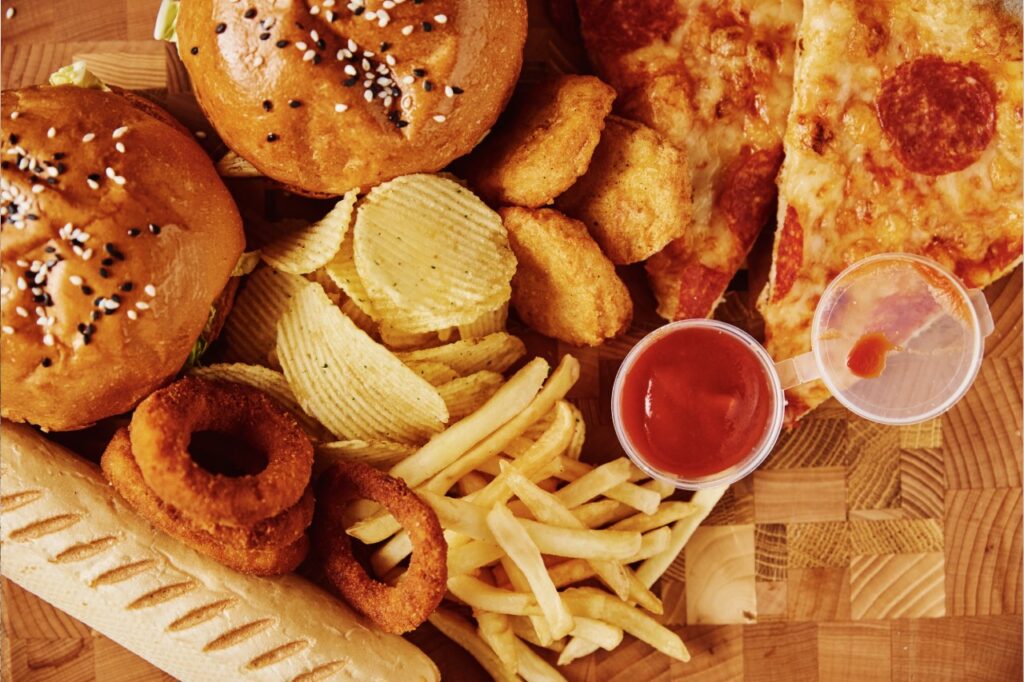Dieser Beitrag ist auch verfügbar auf:
Deutsch
Processed foods have a bad reputation. Package labels promise fresh ingredients, perfect manufacturing hygiene, and long shelf life. Favorites like hot dogs, pizza and Chinese food have been available as frozen foods for decades.
And somehow these and similar foods still manage to be delicious – but according to food expert Hans-Ulrich Grimm, processed foods are one thing above all else: highly dangerous. The main reason is monosodium glutamate (MSG).
The artificial flavor enhancer tricks the palate into sensing a flavor that does not exist. However, MSG can cause sweating, palpitations and rashes. Experts even suspect that MSG promotes diseases such as Alzheimer’s and Parkinson’s. For Grimm, there is no doubt about the harmful effects of MSG: “MSG is considered a neurotoxin that can cause serious damage to the brain”.
MSG and the “Chinese restaurant syndrome”
Our lack of leisure time in our everyday lives makes preparing fresh meals a luxury. Because of this, one in ten Germans chooses ready meals more than three times per week. A high amount of MSG can cause allergic reactions.
The MSG hunters’ main focus is on Asian delicacies served in a cardboard box. People who suffer from the supposed “Chinese restaurant syndrome” experience bouts of weakness, sweating and headaches just a few minutes after eating Asian rice and noodle dishes.
MSG is a Japanese invention
MSG is a Japanese invention and a lucky break for the food industry. It promises maximum flavor at minimal production costs, implying that the prepared meals contain virtually no genuine spices. In 1908, the Japanese chemist Kikunae Ikeda was the first to isolate MSG from algae. He discovered a novel flavor that was to revolutionize the production of food. In addition to the four classic flavors sweet, salty, sour and bitter, there is now “umami,” which means “delicious” and “savory” – in other words, the taste of MSG.
Ikeda’s savory creation was produced on a large scale just one year later. MSG has now conquered the world. Up to 1.7 million tons of the popular flavor enhancer end up in our food every year.
MSG can lead to Obesity and dementia
However, MSG is also found naturally in the human body. As an amino acid, MSG takes on an important function. It is produced in the cells and is used as a neurotransmitter that transmits important signals between the brain and nerve cells.
Its field of application has a lot in common with its artificial equivalent: it regulates appetite and thus weight. If artificial MSG is also consumed through pre-made pizzas, snacks, or soups, it not only causes disruption in the body. It can also be destructive. Synthetic MSG is strongly believed to boost appetite, set off cravings, and damage the brain.
MSG can make brain cells self-destruct
Research produced an alarming study. The researchers from the University of St. Louis in the United States administered MSG to mice and rats. The rodents not only developed an addiction to food, but also displayed modifications in their brains. Consequently, it is highly likely that high levels of MSG also cause more harm to humans than a few extra pounds.
Researchers like Grimm have long recognized the substance as a neurotoxin that can even cause brain cells to die. Artificial MSG can sabotage the information pathways in the body. It energizes brain cells to the point of exhaustion. Exhausted brain cells are disabled by an overdose of calcium. This is followed by the command to self-destruct.
The food industry is known for its deceptive strategies
In addition to the six official names for MSG, which are still relatively easy to recognize, MSG also hides behind so-called E numbers. In EU jargon, these are the names of approved food additives.
It gets really confusing, says Grimm, when stealth names are added to the mix. In this case, it is no longer possible for the consumer to distinguish MSG from supposedly harmless ingredients such as yeast extract. Grimm advises caution. According to the law, spices, yeast and flavorings are not flavor enhancers and therefore do not have to be declared. However, they can actually contain up to 30 percent MSG.
Fresh food protects us against an MSG overdose
But not all foods contain harmful MSG. In meat tomatoes or Parmesan cheese, the appetite stimulant occurs naturally. The body recognizes this and prevents an overdose from occurring in the first place. Before we gorge ourselves on Parmesan cheese, a natural feeling of disgust sets in that limits our food intake and thus our MSG intake. So if you cook with fresh food more often, you run less risk of coming into contact with the harmful variant of MSG.






